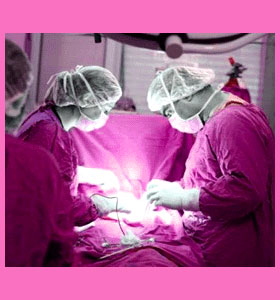
Breast augmentation surgery is one of the most popular and widespread cosmetic procedures in the world. Women have demonstrated a growing desire to be endowed with large, full and perfect breasts, which are not always given to them through the kindness of nature or good genetics. Breast augmentation is the answer to many women’s wishes, providing a realistic and achievable means of owning the breasts of their dreams.
This dialog concentrates on explaining the entire surgical process, from planning to recovery.
Breast Augmentation Surgery Consultation
The first step in creating your new breasts will be a lengthy consultation with your chosen doctor. This is the time when you will discuss all aspects of your lifestyle and your expectations for the surgical results.
You and your doctor will work together in designing a procedure which meets your needs and will provide you with satisfying post-operative aesthetic results. The use of breast augmentation photos from actual patients might be helpful in describing the look you want to achieve.
Virtual reality software on the doctor’s computer can show how different size, shape and profile breast implants will look on you after surgery.
Do not rush this process, since the planning phase is crucial to the final finished product: your new breasts.
Breast Augmentation Techniques
Every individual surgery will have facets unique to that particular procedure. However, most surgeries have common elements as follows:
The doctor will examine your body prior to surgery and make markings with a surgical pen to guide them during the procedure. The doctor, or a separate anesthesiologist, will administer preliminary medications to make you relaxed and sleepy. You will be taken to the operating room and you will be given anesthetic which will put you to sleep. Your skin will be prepped with surgical solutions and the procedure will begin.
The doctor will likely use injections in the operative region to help prevent bleeding and reduce pain upon completion of the surgery. These injections will usually contain a combination of any of the following drugs: lidocaine, xylocaine, marcaine, sensorcaine, bupivicaine and epinephrine. These medicines will help the actual surgical procedure to go smoothly and will also reduce post-operative discomfort.
The doctor will make their surgical incision and create the pocket in which the breast implant will reside. The doctor will place the implant and position it so that it is in the correct anatomical space. This process is repeated on the other side, which usually takes a bit longer, since it must perfectly match the first side in placement and symmetry.
The doctor will then close the incision, from the deepest tissue level to the skin closure, taking extra special care not to leave a noticeable scar in the skin.
After surgery, you will be moved to the recovery room and woken up from the anesthetic. It is not uncommon to have an unpleasant reaction to the anesthetic drugs, which might include headache, nausea and vomiting, in addition to the general pressure and soreness from the surgery.
Recovery from Breast Augmentation Surgery
The breast enlargement procedure itself is relatively straightforward. It takes patience and experience to achieve excellent results, but is not a particularly difficult surgery to perform.
Of course, individual patients might present specific challenges, which might make the surgery more challenging for the physician.
Recovery is quite fast, with the majority of pain disappearing within a few days. The first 48 hours will be tough and you will certainly feel pressure and tightness for some time. Your body will heal and your skin will learn to accommodate the new implants in a matter of weeks. Within a change of seasons, you will be fully recovered and enjoying your new breasts and all the emotional and physical benefits they have bestowed upon you.
Breast Augmentation Surgery Suggestions
Undergoing any surgical procedure is a risk and you should be aware of all the potential complications which may occur. Surgery is a calculated risk taken by all patients. However, choosing your surgeon and planning your procedure carefully will help to reduce these risks to the lowest levels possible.
Immediately after the procedure, many women are overwhelmed by the discomfort and general horrible feeling from the anesthetic. This is normal and will pass quickly. Do not allow this feeling to upset you and make you doubt your decision to have breast surgery. In a few days, you will feel much better and will improve steadily from then on.
Once healed, the pain of the surgery will be a distant memory, but your new beautiful breasts will be a daily joy which can provide you with all the expectations you desired so strongly. Enjoy them and treat them right. Make sure to follow your doctor’s instructions carefully to ensure a speedy and healthy recovery.




